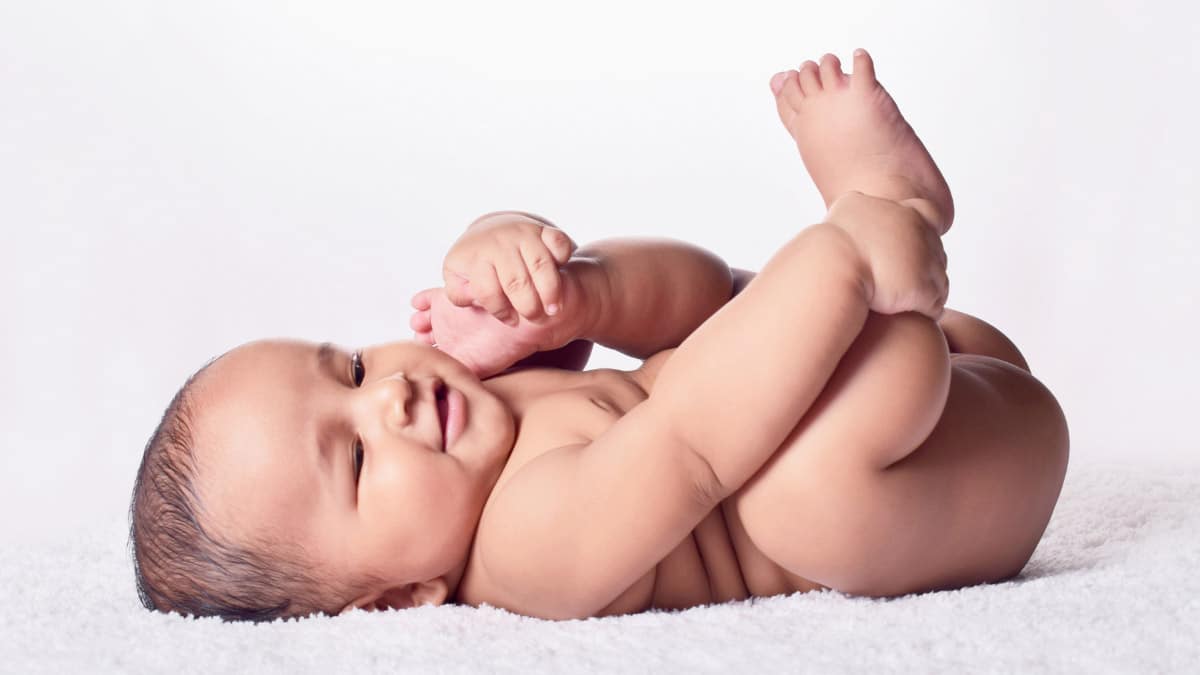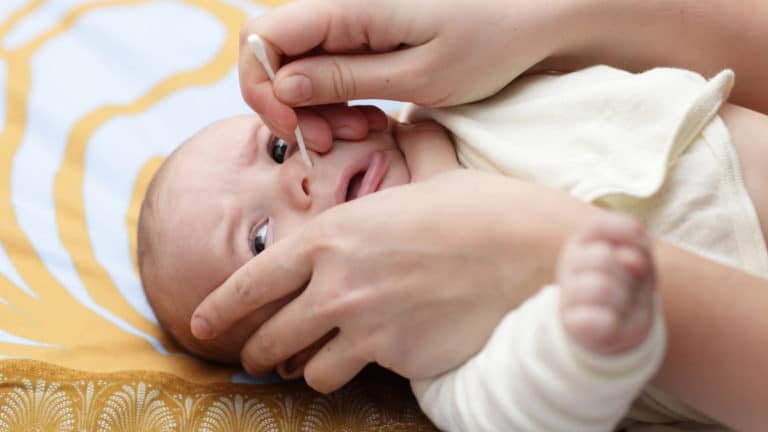This article is for the parents of newborn sons. Because I was once that parent, and I went through a lot of unnecessary worry about my boy’s physical well-being. This article does NOT contain any photos of testicles – for so, so many reasons. But if you’re wondering what dropped balls look like, there’s a really good chance you’re a new mom. You might be trying to figure out if your boy has all the usual parts where they’re supposed to be.
I didn’t have a younger brother and I wasn’t super-involved with any other baby boy relatives. When I had my son, I had these exact questions. I was concerned enough that I made a special trip to the pediatrician to ease my mind! Now, I’ve interviewed some pediatricians to get the answers to all of your questions related to your boy’s scrotum. No matter how weird, embarrassing, or worrying they might feel, Dr. Pierrette Mimi Poinsett and Dr. Leann Poston have heard it all.
It is my sincere hope that the information and advice provided by the medical professionals in this article will ease your mind. You should be able to simply enjoy your time with your baby boy!
And if you are an older boy – say, one near the middle school ages – that has found his way here, this article can answer your questions, too!
What Dropped Balls Look Like
Most biological moms have seen a pair of adult testicles before. But plenty of moms – adoptive, through a surrogate, or otherwise – may not have. Even if you have, that doesn’t translate into knowing exactly what a baby’s scrotum should look like or contain. If you can’t tell whether or not your baby boy’s balls have dropped, Dr. Poinsett describes it simply. “Dropped balls look like small marbles. They are smooth and firm in texture.”
I will add from my own son’s pediatrician’s guidance that when the testicles are present, they tend to show through the scrotum as visually darker. For example, you may notice a purple hue against the pinkish scrotum. But they can also show up lighter! You may see them under the yellow of pressed skin if pushing them to the surface to examine them.
How to Check for an Undescended Testicle
“The testicles move from the abdomen, down the inguinal canal, and into the scrotum. If they don’t make the full journey, then an undescended testicle is the result,” says Dr. Poston. But if just looking at your baby isn’t a clear indicator that his balls have descended, how do you determine if they have?
Dr. Poinsett describes the process of checking for an undescended testicle. “You can check the testicles by gently milking along the groin to the scrotum. Checking for a testicle does not harm the baby. Your baby’s pediatrician will check for an undescended testicle during a well-child visit.”
So if you’re not comfortable performing this check yourself, that’s totally fine and not necessary at all. You should be taking a newborn to the pediatrician fairly frequently, so you can wait for his next checkup. Just remember to ask your pediatrician what their findings are. They don’t always comment on every part of their examination.
Questions About Testes, Answered
What does the phrase “his balls have dropped” actually mean?
“‘His balls have dropped’ means his balls (testicles) are present in the scrotum (a sac behind the penis),” says Dr. Poinsett. It’s as simple as that!
When do balls drop? Should I be able to see them right after he’s born?
According to Dr. Poinsett, “Testicles may drop into the scrotum from birth to age nine months. You may not be able to see them at birth.”
When my son was born, I had a really hard time “seeing” his testicles in his scrotum. This was true even after his pediatrician assured me they were present. As he got older (closer to one year old), they became easier to see during diaper changes.
How do I know if my son has a retractile testicle?
You may already know from observing adult men that testicles seem to have a mind of their own and will move up and down at will. Dr. Poston explains what this function is for. “Muscles that run down the inguinal canal into the scrotum control the temperature the testicle is exposed to by pulling it closer to or further from the body.”
A retractile testicle, however, performs a bit differently from simple up-and-down temperature control. “With a retractile testicle, the testes are pulled up into the inguinal canal, especially when the baby is cold during diaper changes. If you run your finger down the inguinal canal, you can feel the testicle and milk it back into the scrotum,” says Dr. Poston.
Dr. Poinsett has another important point. “A retractile testicle … is relatively common. It can last into puberty. Surgery is not warranted in retractile testicles.” So even if your son’s testicles are usually in his scrotum but occasionally jump all the way back into his groin, it’s usually nothing to worry about.
Will my son need surgery for an undescended testicle?
I learned the difference between a retractile testicle and an undescended testicle from Dr. Poinsett: “An undescended testicle is a testicle that doesn’t readily move into the scrotum with gentle milking.” She adds that “this is more common in premature infants versus full-term infants.”
So is an undescended testicle something to worry about? According to Dr. Poston, it could be. “If the testicles don’t move into the scrotum and are left in the abdomen, the higher temperature could cause fertility problems.”
Your pediatrician should inform you of an undescended testicle, monitor it at all well-baby exams, and discuss retrieval of it with you when the time comes. “Surgery to attach the testicle to the scrotum is called orchiopexy. It is a simple surgery and is usually successful. Surgery is usually done between 6 months to 18 months of age,” says Dr. Poinsett.
Why do older boys and men joke about “balls dropping” later in life? Is there another ball drop I should prepare for?
This is more of a societal issue. Obviously, testicles can only permanently “drop” into the scrotum one time. But as a kid, I would often hear boys in middle school and high school joke about another boy’s balls “finally dropping.” This was usually in response to said boy doing something the others felt was “manly.” Fortunately, this kind of teasing and colloquialism isn’t used much anymore.
While boys’ testicles do grow larger during puberty, thus creating the appearance of their balls dropping lower than they used to be, there is no sudden “ball drop” that causes this. It’s a gradual growth, no different from a boy growing taller (although sometimes it does seem like they shoot up overnight!). It’s very unlikely they’ll feel any of it happening at any point in time.
There won’t come a day when your son finally declares his balls have fully dropped. There’s no signal to let him know they’re done growing, and there’s no specific timeline for it, either. Furthermore, the growth of a boy’s testicles and scrotum is not indicative of him finally “becoming a man.” So basically… having big balls doesn’t mean a boy is mature, fully grown, or the leader of a pack, so to speak.
Final Thoughts
I never thought I would use the word “testicles” so many times in one article. BUT, as a mom who had all of these exact questions, I wish an article like this had existed when my son was a baby. Hopefully it has helped ease your mind and armed you with all the information you need at your next appointment with your son’s pediatrician.
We’ve also answered other questions about babies you might have, too!








